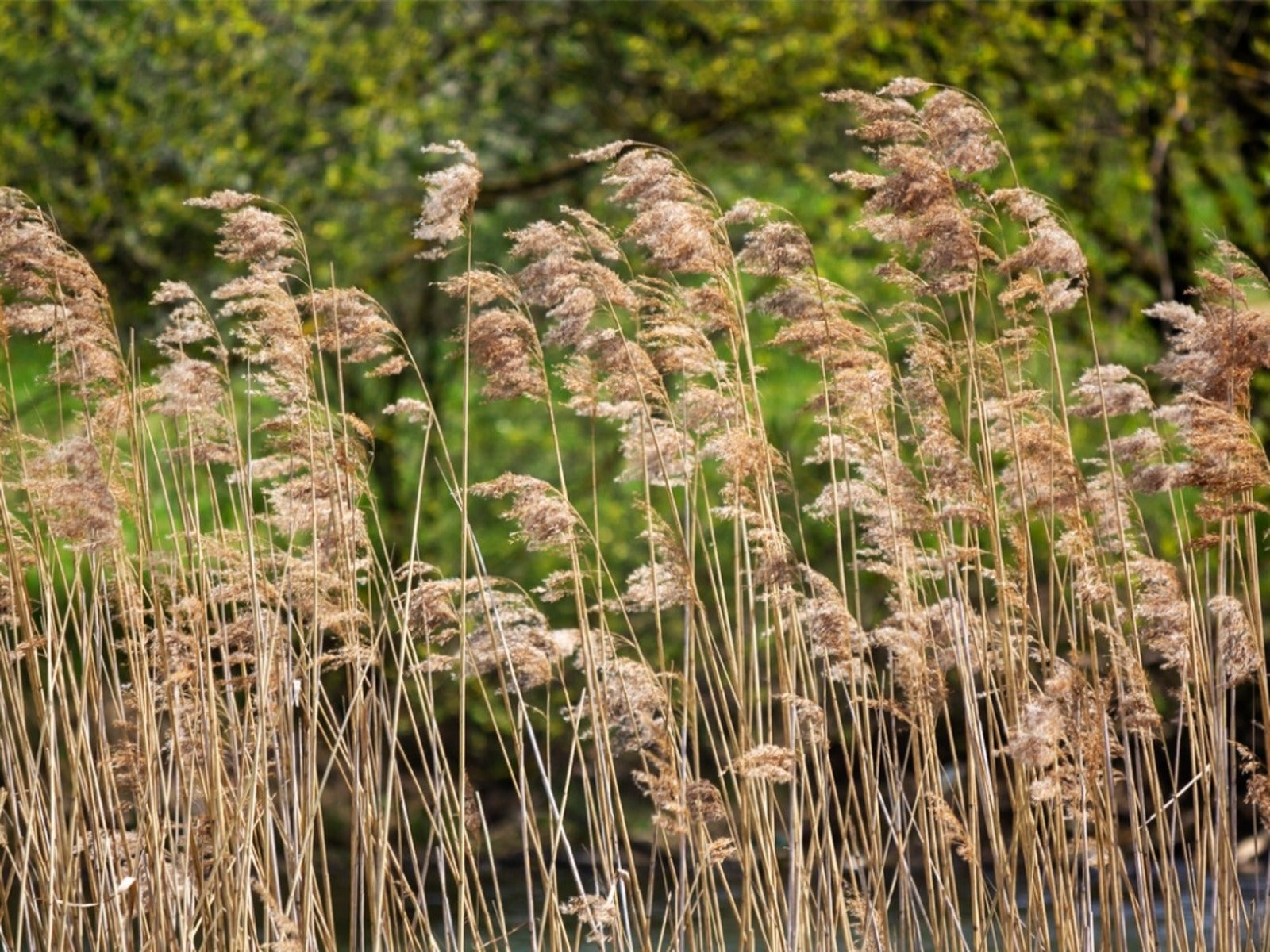Phragmites: Native Vs. Invasive Varieties


Phragmites or common reeds include native as well as introduced species of grasses. The non-native phragmites are outcompeting native vegetation and pushing out the native phragmites. Learn more about the differences between native and non-native phragmites.
Quick Facts about Phragmites:
Botanical name: Phragmites australis
Height: 7 to 15 feet (2 to 5 m)
Spread: 9 feet (3 m)
Sun exposure: Full sun to part shade
Soil requirements: Moist to wet light, medium, or clay soil
Hardiness zones: USDA zones 4-10; UK zone 5
Sign up for the Gardening Know How newsletter today and receive a free copy of our e-book "How to Grow Delicious Tomatoes".
When to plant: Do NOT plant invasive subspecies australis. Plant native species in spring.
Phragmites Or Common Reed: Native Vs. Invasive Varieties
Common reed (Phragmites australis) is a grass with native and non-native varieties found in wetland areas, along stream and pond edges, lake shores, marshes, and low-lying ditches. It is important to learn the differences between the two species so you can eliminate the highly aggressive, non-native species on your property and take preventative measures in its spread.
The non-native species, Phragmites australis ssp. australis is extremely tall with blue-green leaves, a purplish flowerhead, and an invasive habit that reproduces by massive rhizome stands.
Native, beneficial phragmites such as Phragmites australis ssp americanus are being pushed out because of the invasive species. It is shorter with yellow-green leaves and an airy flowerhead.
What Are Phragmites?
Phragmites are perennial wetland grasses that produce plumes in late summer followed by seedheads. U.S. native species that were once widespread are now most populous in western states.
Are phragmites invasive? The introduced non-native phragmites are displacing the native grasses and other vegetation and are considered highly invasive. They cause changes to the ecosystem process, outcompete native aquatic plants, and are not suitable nesting, food, and shelter for native animals.
The invasive species reproduces by underground rhizomes and above ground stolons. Rhizomes can grow as much as 6 feet (1.8 m) per year and eventually increase to 60 feet (18 m) in a mature stand. Roots can descend as much as 6 feet (1.8 m). Each node on a rhizome has the potential of producing a new plant. Seed heads produce thousands of seeds but most do not germinate.
Native Phragmites
The native, beneficial common reed (Phragmites australis spp. americanus) is shorter at 7 feet (2 meters) with an airy seedhead. It has yellowish-green leaves, which are lighter than the leaves on the introduced species. Its leaf sheaths are loosely attached to the stems and fall away naturally. The stalks are non-rigid, reddish and smooth by the end of the season.
Invasive Phragmites
Native to Europe and Asia, the invasive phragmites Phragmites australis ssp. australis was accidentally introduced into the U.S. and is now widespread across the continent. It can be distinguished from the native phragmites by its taller stems, bushier purplish inflorescences and stalks that are dull, tan, rigid and hollow. Its leaves are dark or bluish green and the leaf sheaths stay tightly attached to the stems.
How to Get Rid of Phragmites
It may take several years to completely eliminate an infestation of Phragmites australis spp. australis and followup vigilance is necessary. Suggested methods of control include:
Mechanical
Mow at least three times during a growing season to decrease its thickness. Mowing equipment must be cleaned before moving it to another location to prevent spreading pieces of rhizome or seeds.
Prescribed fires can be effective in the year following an herbicide treatment.
Chemical
Following all label instructions, apply herbicide between July and September for phragmites removal. Allow the grass to die back for about two weeks and then mow. (If using an herbicide in standing water, make sure the product is labeled for aquatic use.)
Controlling non-native phragmites is difficult once they are established. In areas where phragmites are considered a noxious weed, transporting, propagating, or selling the non-native plants is prohibited.
Note: Any recommendations pertaining to the use of chemicals are for informational purposes only. Specific brand names or commercial products or services do not imply endorsement. Chemical control should only be used as a last resort, as organic approaches are safer and more environmentally friendly.

After graduating from Oklahoma State University with a degree in English, Susan pursued a career in communications. In addition, she wrote garden articles for magazines and authored a newspaper gardening column for many years. She contributed South-Central regional gardening columns for four years to Lowes.com. While living in Oklahoma, she served as a master gardener for 17 years.